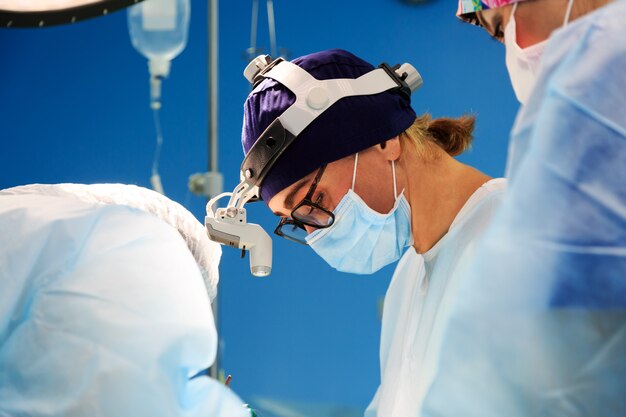Exploring Cataract Surgery: What to Expect and How It Works
Cataracts can cloud your vision and make everyday activities increasingly challenging. As one of the most common eye conditions, understanding what cataract surgery entails is essential for anyone looking to restore their vision clarity. This comprehensive guide will walk you through the ins and outs of cataract surgery, ensuring you are well-informed and prepared for what lies ahead.
What Are Cataracts?
Cataracts refer to the clouding of the eye's natural lens, leading to a decrease in vision. This condition often develops slowly and can affect one or both eyes. Some common symptoms include blurry vision, difficulty seeing at night, and seeing halos around lights. While age is a significant risk factor, cataracts can also result from injuries, certain medications, and medical conditions like diabetes.
Identifying Symptoms of Cataracts
- Blurred Vision: A common early sign of cataracts.
- Color Fade: Colors may appear less vivid.
- Night Vision Issues: Difficulty seeing in dim lighting or at night.
- Sensitivity to Light: Bright light may cause discomfort or glare.
The Necessity of Cataract Surgery
Cataract surgery becomes necessary when cataracts impair daily activities like reading or driving. The decision for surgery is often based on the impact on your quality of life rather than a specific level of vision impairment.
Your Surgical Eligibility
- Impact on Daily Life: If daily tasks become challenging.
- Overall Eye Health: Compatibility for surgery is also determined by the presence of other eye diseases.
Preparing for Cataract Surgery
Preparation is crucial to ensure a smooth surgery and recovery process. Before the procedure, your ophthalmologist will conduct a series of tests to measure your eye's size and shape. These tests help determine the correct lens implant and ensure the best possible outcome.
Pre-Operative Steps
- Comprehensive Eye Examination: Measurements are taken to select the right lens implant.
- Health Assessment: Discussion of your medical history and any medications you are currently taking.
- Instructions from Your Doctor: You'll receive guidance on what to do in the days leading up to surgery, such as fasting or stopping certain medications.
Understanding the Cataract Surgery Procedure
Cataract surgery is typically performed on an outpatient basis, meaning you can go home the same day. The procedure usually involves a tiny incision to remove the clouded lens and replace it with an artificial lens, known as an intraocular lens (IOL).
Steps in the Surgery Process
- Anesthesia and Preparation: Local anesthesia is used to numb the area. You’ll remain awake but comfortable.
- Lens Removal: Using advanced techniques like phacoemulsification, the surgeon breaks up and removes the cloudy lens.
- Lens Replacement: An intraocular lens is implanted to restore clear vision.
Types of Intraocular Lenses (IOLs)
- Monofocal IOLs: Provide clear vision at one distance, typically set for distance vision.
- Multifocal IOLs: Help see at varying distances, reducing the need for glasses.
- Toric IOLs: Correct astigmatism for clearer vision.
Recovery Process and Post-Operative Care
Post-surgery, you'll need to follow specific instructions to aid recovery and prevent complications. Most patients experience clearer vision within a few days, although full recovery can take a few weeks.
Recovery Tips
- Use Eye Drops: Essential for healing and preventing infection.
- Avoid Strenuous Activity: Limit heavy lifting or bending.
- Protect Your Eyes: Wear protective eyewear, especially outdoors.
Follow-Up Care
Regular check-ups with your ophthalmologist ensure the healing process is on track and address any concerns promptly.
Potential Risks and Considerations
Like any surgery, cataract surgery carries some risks, although complications are rare. Understanding these risks can help you make an informed decision about your care.
Common Risks
- Infection or Inflammation: Usually treatable with medication.
- Posterior Capsule Opacity (PCO): A common secondary cataract easily treatable with a simple laser procedure.
Factors to Discuss with Your Doctor
- Overall Health: Conditions like diabetes may affect healing.
- Previous Eye Conditions: Conditions like glaucoma might require special considerations.
Making the Decision: Is Cataract Surgery for You?
Deciding on cataract surgery involves weighing the benefits of improved vision against the possible risks. Consulting with an eye care professional will provide insight tailored to your specific situation. While the thought of eye surgery can be daunting, many find significant improvements in their quality of life post-surgery.
Quick Summary: Cataract Surgery Takeaways
📝 Key Points to Remember
- Cataract surgery is a common outpatient procedure.
- Pre-surgery evaluations determine lens type and readiness.
- Understanding IOL options helps tailor the surgery to your lifestyle needs.
- Recovery involves eye drops and follow-up visits.
- Assess risks and benefits to make an informed decision.
Cataract surgery is a transformative procedure that can significantly enhance your vision and quality of life. By understanding what cataract surgery entails and staying informed through each step of the process, you can confidently navigate this journey towards clearer vision.
